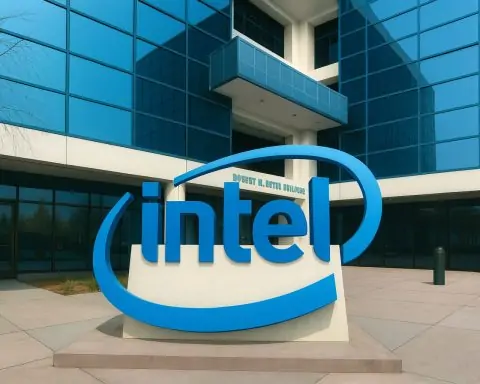- Southern’s Q3 earnings beat forecasts: Q3 2025 net income was $1.71 billion (up 11.5% YoY) with operating revenue ~$7.82 billion [1] [2], topping estimates (adj. EPS ~$1.60 vs ~$1.50 expected [3]).
- Data-center boom: Data-center load surged ~17% in Q3 [4], and Southern added ~12,000 new customers [5]. Its service area also saw 22 announced projects (≈5,000 jobs and $2.8 billion in new investment) [6]. (Reuters notes this is driven by “extreme heat” and firms “rushing to adopt AI,” which are powering “power-hungry” data centers [7].)
- Grid build-out plan: Georgia Power (Southern’s largest utility) is seeking regulators’ OK for ~10,000 MW of new generation by 2030 [8]. It just issued a 500 MW large-scale battery storage RFP [9] and filed to add ~9.9 GW of capacity (including ~3 GW of batteries) by 2031 [10]. Georgia Power already operates a 65 MW battery (Mossy Branch) with ~765 MW more planned [11], reflecting massive grid-expansion to meet demand.
- Regulatory & political context: Georgia customers have already endured steep rate hikes (six increases since 2023 [12]), prompting a 3-year base-rate freeze through 2026 [13]. Next year Southern will seek to recover Hurricane costs from ratepayers [14]. (Southern argues spreading costs to big users will “reduce the burden on other customers” [15].) Voters are deciding two PSC commissioner seats Nov 4 [16] – Womack notes Southern has a “long history of working constructively with whomever” is elected [17].
- Future outlook: Southern has locked in roughly 8 GW of new large-customer load contracts [18] (much of it data-center related) and maintains some of the region’s lowest retail rates. But its growth plan is capital-intensive – management says roughly $9 billion in equity is needed by 2029 [19]. Moody’s has placed SO on negative outlook [20], reflecting concerns about rising costs and regulatory risk. Gurufocus notes its market dominance (44 GW generation across fuels) is countered by heavy regulation and commodity volatility [21] [22].
Record Earnings and Growth in Q3 2025
Southern Co’s third-quarter results soared past Wall Street forecasts. On Oct. 30 Southern reported GAAP net income of $1.711 B (11.5% above Q3 2024’s $1.535 B) [23], and adjusted EPS of $1.60 (vs. ~$1.50 consensus) [24]. Revenues climbed 7.5% to $7.82 B [25]. CEO Chris Womack said these results reflect the “momentum around electric demand growth opportunities” now building in the Southeast [26]. In fact, Southern said retail electricity sales were ~1.8% higher year-to-date [27], with Q3 usage up ~3.5% in commercial customers and ~2.7% in residential households [28]. The company added roughly 12,000 new customers in Q3 [29] – well above normal – as businesses (especially data centers) and new developments came online.
Georgia Power (Southern’s big utility in Georgia) was the star performer. Its division earned $1.25 B in Q3 – up 19% from a year earlier [30] – making it by far the largest profit contributor. (Southern serves 9 million customers across 6 states; Georgia Power covers roughly half.) The year-to-date profit is now $3.93 B vs. $3.87 B a year ago [31]. Along with revenue and customer growth, Southern benefited from rate increases and efficiency; its retail rates remain ~10% below national averages [32], yet it earns strong returns on new investments.
AI and Data-Center Demand: The New Load Driver
A central theme of the quarter was surging demand from data centers and AI infrastructure. Southern reported that power consumption at data centers in its service territory jumped ~17% in Q3 [33]. Nationally, analysts warn this trend is only accelerating: Reuters notes that extreme summer heat and companies “rushing to adopt AI” have greatly amplified cooling and computing loads [34]. It even cites forecasts that within a few years, data centers might consume up to 12% of all U.S. electricity – nearly triple today’s share [35]. In other words, Southern and its peers are tapping into a wave of electrification led by cloud computing.
Tech outlet TS2 .tech emphasizes that Georgia (especially metro Atlanta) has become an epicenter of this trend. It reports that Georgia’s “booming energy demand (especially from datacenters in Atlanta and the ‘I-85 corridor’)” has made huge new power procurements urgent [36]. In practical terms, Southern sees firms signing gigawatt-scale contracts. For example, its Q3 materials note that about 22 large customers announced new operations in the quarter [37] – a pipeline of projects expected to bring ~5,000 jobs and ~$2.8 B in local investment [38]. Much of that involves high-tech industries. Nationally, even Midwest utilities report similar pressure: TS2 reports Michigan’s DTE Energy is in talks to supply over 3 GW to AI-driven data centers, noting demand for data-center power has “no slowdown” [39]. Across the Southeast, TVA (which serves Tennessee and nearby areas) explicitly cites “growing power demand from AI” as a reason to invest in advanced fusion/fission projects [40].
In summary, Southern Co is riding an AI-driven electricity boom. Demand from hyperscale data centers and other large tech loads is keeping plants and lines busy. CEO Womack calls it a historic “wave of electricity demand” extending into the 2030s [41]. Regulators and utilities alike see it as real. For example, Southern itself considered keeping old coal plants running longer to meet these loads – Womack told Bloomberg last year that “looking at coal operating longer is a consideration” as part of an “all of the above” plan to meet demand [42].
Massive Infrastructure Build-Out
To serve this surge, Southern (via Georgia Power) is planning a huge grid expansion. In September 2025 the company formally requested permission to add about 10,000 MW of new generation by 2030 [43]. TS2 reports that Georgia Power’s latest Integrated Resource Plan envisions roughly 9.9 GW of new capacity (including ~3 GW of batteries) by 2031 [44]. This follows recent approvals for over 1 GW of solar PPAs (power purchase agreements) and other projects. In short, Southern is proposing multiple new gas plants, solar farms, and storage projects to keep up.
A key piece is energy storage. The 2025 plan includes a 500 MW battery storage RFP (each project must provide ≥2 hours of output) [45]. These would integrate with renewables and the grid to improve flexibility. Georgia Power already has a 65 MW battery (the Mossy Branch project) online and about 765 MW more in development [46]. Executives stress that batteries “will continue to play a critical role in the power grid of the future” [47]. (NERC reliability reports support this: grids with substantial storage see much better frequency control and stability [48].) In effect, Southern is moving to keep solar and wind from overloading the system by storing excess power and discharging during peak demand – a capability deemed vital as data centers and EVs drive up demand unpredictably.
All told, this means billions of dollars of new spending. The AJC notes the “historic” build-out “will cost billions” [49]. But Southern points out regulators allow utilities to earn a return on these investments, which in theory benefits shareholders. Georgia Power claims that if costs are shifted onto large data-center users, it could actually ease burdens on other ratepayers [50]. In the fourth quarter, the company will be defending its 2030 supply plans at the Georgia PSC – hence all the election-year attention.
Regulatory, Ratepayer and Political Issues
Southern’s growth push comes at a sensitive time for customers. Georgia households have already endured six electric rate increases since 2023 [51]. Under pressure, the PSC imposed a three-year freeze on base rates (until 2026) for now [52]. But Southern warns that major storm repair costs (from Hurricane Helene in Sept. 2024) and rising fuel expenses will prompt new rate cases soon [53]. The company argues that by spreading those costs to very large users (data centers, etc.), it can actually “reduce the burden on other customers” [54].
Not everyone is convinced. Consumer advocates and media have questioned whether all this new generation is truly needed, or if older plants could be kept running instead [55]. The debate is playing out against Georgia’s PSC elections (Nov. 4, 2025) for two of five commissioner seats [56]. Challengers are campaigning hard over affordability. Southern insists its strategy is ultimately customer-focused: as Womack put it, the company has an “incredibly long history of working constructively with whomever” is on the commission [57]. In other words, Southern says it will press ahead regardless of the election, seeking cost-recovery for its investments under the new regulatory rules in Georgia.
Industry Trends & National Context
Southern Co’s story fits a national pattern. Utilities around the country are scrambling to supply the next generation of loads. In Texas, Duke Energy and NextEra are striking deals with cloud companies. In Michigan, DTE’s CEO notes there is “no slowdown” in demand from AI data centers [58]. TS2 also highlights that TVA (Tennessee) plans fusion and advanced-nuclear projects explicitly to meet AI-era demand [59]. Even New York and Virginia have gigascale AI data-center proposals on the table (notably Rick Perry’s project).
On the flip side, this surge has revived debate on grid reliability and emissions. Data-center growth is so intense that Dominion (VA) forecasts a >100% jump in usage over 15 years due largely to data centers [60] (though that plan still envisions mostly clean energy). Some gas and coal operators see data centers as an opportunity: one coal plant manager recently signed a term sheet to supply an unnamed data center. [61] Southern Co itself has not ruled out extending coal or gas operations if needed; as noted, Womack in 2024 said keeping Bowen coal plant units online longer is being considered [62].
Meanwhile, all this growth is driving investment in renewables and storage. Southern Co and its peers are racing to expand solar, wind, batteries, and even transmission to handle the load. (For example, Georgia regulators just approved over 1 GW of third-party solar for Southern [63].) TS2 notes the broader trend: utilities are saying “yes” to hybrid solutions – mixing fossil, clean, and storage – to avoid shortages.
Strategic Outlook and Risks
Analysts see Southern Co well-positioned but wary of its heavy plan. On the plus side, GuruFocus highlights Southern’s market dominance and diversity: ~44 GW of capacity (gas, nuclear, hydro, batteries, renewables) serving 9 M customers across several states [64]. Its rate-regulated model provides predictable returns on infrastructure. Southern has already “locked in” about 8 GW of new load contracts [65], insuring future revenue from big customers (largely data centers and industry).
On the downside, Southern faces massive capital expenditures. The company forecasts roughly $9 billion of equity financing needed by 2029 [66]. Carrying that debt and issuing equity could pressure the stock. Moody’s has warned with a negative outlook [67]. Regulatory risk is real: project delays or disallowed costs could hurt finances. Furthermore, any slowdown in technology spending or adoption of efficiency could undercut assumptions. GuruFocus flags that Southern’s largest weakness is just how heavily it depends on regulatory approval – any policy shifts (e.g. tighter gas rules, or if data center growth slows) would hurt [68] [69].
Nevertheless, Southern and its supporters argue that long-term demand growth is solid. The Southeast still has millions of people and businesses adding appliances, cars, and servers. Southern has won praise for keeping customer rates below national averages even while investing in clean energy. Its management insists the grid will remain reliable and affordable if the new infrastructure is built as planned. In the words of CEO Womack (quoted in October): the company is “focused on meeting these growing needs in a way that benefits all customers” [70] (investor deck). In short, Southern Co appears to be capitalizing on a structural boom in electricity usage, but it will have to execute a complex strategy of generation, storage, and customer contracts while satisfying regulators and investors.
Sources: Latest Q3 2025 reports and analyses from The Atlanta Journal-Constitution, Reuters, Motley Fool/GuruFocus, and tech media TS2.tech [71] [72] [73] [74]. These include Southern Co press releases and commentaries, state regulator filings, and expert commentary on data-center demand [75] [76].
References
1. www.ajc.com, 2. www.reuters.com, 3. www.reuters.com, 4. www.ajc.com, 5. www.ajc.com, 6. www.gurufocus.com, 7. www.reuters.com, 8. www.ajc.com, 9. ts2.tech, 10. ts2.tech, 11. ts2.tech, 12. www.ajc.com, 13. www.ajc.com, 14. www.ajc.com, 15. www.ajc.com, 16. www.ajc.com, 17. www.ajc.com, 18. www.gurufocus.com, 19. www.gurufocus.com, 20. www.gurufocus.com, 21. www.gurufocus.com, 22. www.gurufocus.com, 23. www.ajc.com, 24. www.reuters.com, 25. www.reuters.com, 26. www.ajc.com, 27. www.gurufocus.com, 28. www.gurufocus.com, 29. www.ajc.com, 30. www.ajc.com, 31. www.ajc.com, 32. www.gurufocus.com, 33. www.ajc.com, 34. www.reuters.com, 35. www.reuters.com, 36. ts2.tech, 37. www.gurufocus.com, 38. www.gurufocus.com, 39. ts2.tech, 40. ts2.tech, 41. www.ajc.com, 42. www.datacenterdynamics.com, 43. www.ajc.com, 44. ts2.tech, 45. ts2.tech, 46. ts2.tech, 47. ts2.tech, 48. ts2.tech, 49. www.ajc.com, 50. www.ajc.com, 51. www.ajc.com, 52. www.ajc.com, 53. www.ajc.com, 54. www.ajc.com, 55. www.ajc.com, 56. www.ajc.com, 57. www.ajc.com, 58. ts2.tech, 59. ts2.tech, 60. www.datacenterdynamics.com, 61. www.datacenterdynamics.com, 62. www.datacenterdynamics.com, 63. ts2.tech, 64. www.gurufocus.com, 65. www.gurufocus.com, 66. www.gurufocus.com, 67. www.gurufocus.com, 68. www.gurufocus.com, 69. www.gurufocus.com, 70. www.stocktitan.net, 71. www.ajc.com, 72. www.reuters.com, 73. ts2.tech, 74. ts2.tech, 75. www.reuters.com, 76. ts2.tech







